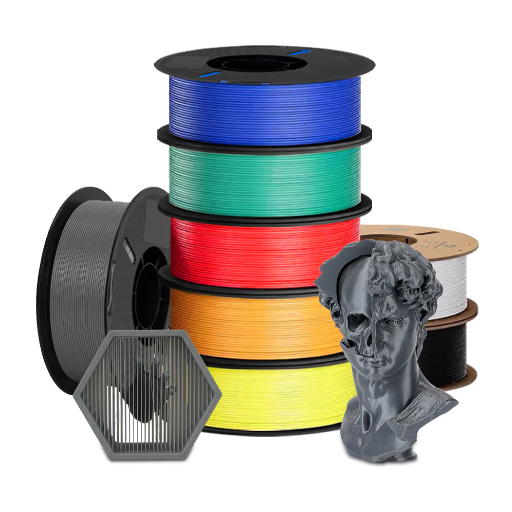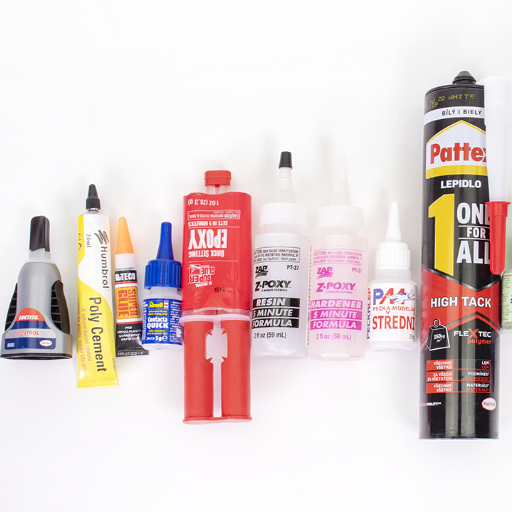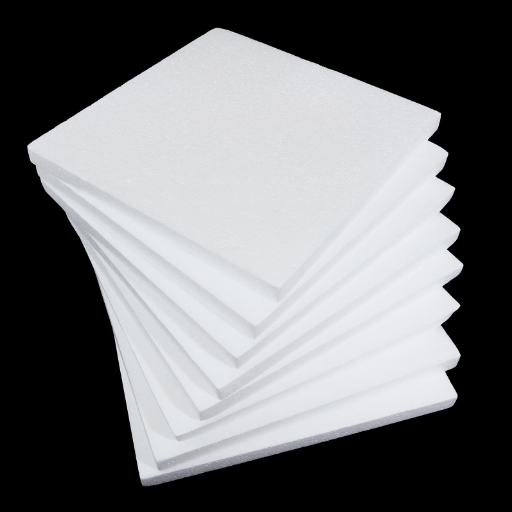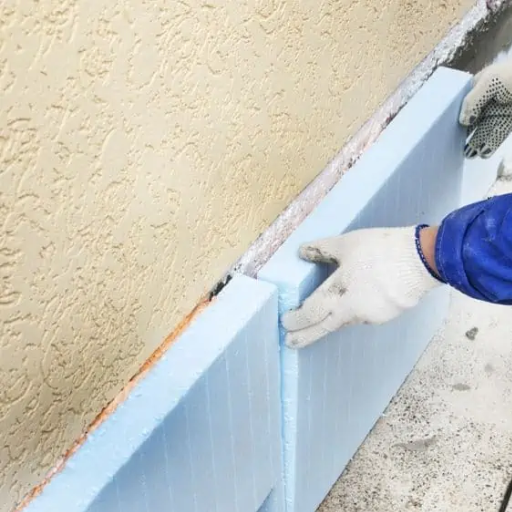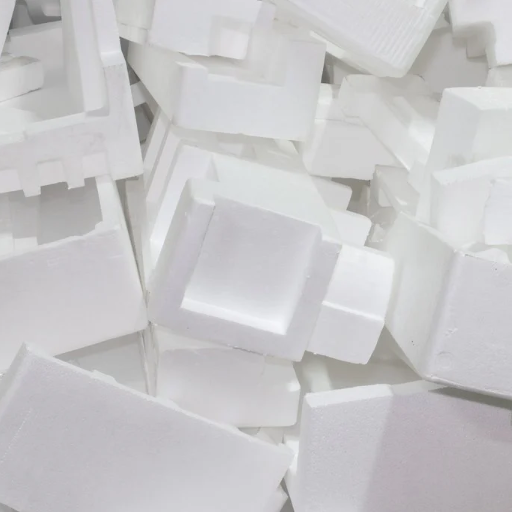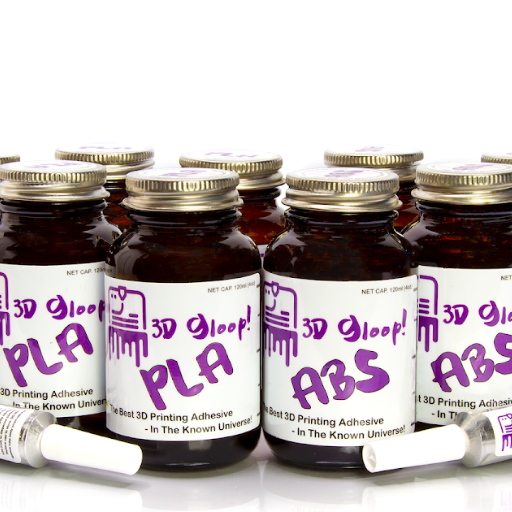In terms of high-strength adhesives, both Loctite and Krazy Glue are arguably some of the most popular within the industry. Both brands claim to glue together almost anything in a matter of seconds, but selecting the most appropriate one can be quite difficult. This article gives a detailed outline for comparing Loctite and Krazy Glue. These two brands will be compared and evaluated on adhesive strength, versatility, time of drying, durability, and applicability range. At the end of this guide, you will know in which ways these products differ, as well as which one is better suited for your projects, be it household work, marital work, or professional undertakings.
What Are the Key Differences Between Loctite and Krazy Glue?

The differences between Loctite and Krazy Glue stem from their formulation, versatility in application, and specific use cases. Loctite provides a wide selection of cyanoacrylate adhesives that cater to different professions and professional requirements. Their adhesives range from high-stress workloads to temperature and impact-resistant needs. On the contrary, Krazy Glue is primarily used for patches around the house as it is well renowned for setting fast and being easy to use on rigid surfaces. Loctite is typically preferred because of its enhanced versatility, its ability to bond with diverse materials such as plastic, metal, and rubber, and for being more durable. Krazy Glue triumphs in speed and ease for simpler tasks, however, it cannot withstand more rigorous tasks. Deciding between the two products is largely dependent on the project scope, type of materials, and expected conditions.
Understanding Loctite and Its Formulation
Loctite’s formulation of the cyanoacrylate range of adhesives seeks to provide long-lasting and strong bonds with a wide array of materials. Designed with specific additives to enhance performance, these adhesives withstand high temperatures, vibrations, and chemicals, as well as moisture. Loctite products are used in multiple industries and households for bonding plastics, metals, wood, rubber, and ceramics. Their specialized gap-filling, fast curing, and high-impact resistant formulas further serve to illustrate this. Because of their impressive performance under stress and severe operating conditions, Loctite products are ideal for professionals and hobbyists tackling intricate or high-demand projects.
Exploring Krazy Glue and Its Unique Properties
Krazy Glue is a fast-acting adhesive that glues together items on contact and is comprised mostly of ethyl cyanoacrylate which adheres to multiple surfaces with moisture in the surrounding air. Krazy Glue is well known for its simplicity, allowing it to be used on a multitude of surfaces. In addition to forming a strong and permanent bond with plastic, it does the same with metal, ceramic, rubber, and wood. Krazy Glue’s precision applicator nozzles make it perfect for tiny repairs or specific fingerwork. However, Krazy Glue tends to work best for lighter-duty tasks and surfaces that will not undergo much stress or movement. This is due to Krazy Glue’s brittleness when under force, which diminishes its use in strenuous or flexible situations. Because of its simple way of curing and lack of tedious complexity, Krazy Glue is a popular choice for many simple everyday repairs and crafting.
Comparing Their Adhesive Strengths
Krazy Glue truly outshines its competitors when it comes to the adhesive bonds’ strengths, especially in the context of light materials that require the least amount of stress. Krazy Glue cures within a second’ timeframe upon contact with moisture, and this is due to its surface bond composition which allows it to concentrate on ethyl cyanoacrylate. While the glue may be exceptional at curing, it does come with its flaws, for example, it does not perform well in harsh structures that require flexing, shear forces, and sustained mechanical stress.
In other words, Krazy Glue is not very effective when dealing with extreme environmental circumstances such as high levels of moisture and temperature. For these circumstances, you will require Epoxy because it tackles the most rigorous tasks by effectively joining a variety of materials. Just like glue, epoxy also has its flaws, which include low tensile strength. When it comes to fabric and leather, Polyurethane adhesives may be the best solution as they perform well on flexible surfaces.
Overall, Krazy Glue gets the job done well with lightweight tasks while Polyurethane and Epoxy gules tackle the more strenuous tasks that carry dynamic loads alongside harsh conditions. It all depends on the task at hand when selecting the glue that best fits the requirements.
How to Choose the Best Super Glue for Your Needs?

When selecting the best superglue for your needs, consider the following factors:
- Material Compatibility – For smooth, rigid surfaces like metal, ceramic, or plastic, cyanoacrylate adhesives (e.g., Krazy Glue) excel in providing a strong bond. For porous or flexible materials such as fabric or leather, opt for polyurethane adhesives due to their flexibility and durability.
- Environmental Conditions – Assess the operating environment. Krazy Glue works well under normal conditions but struggles with extreme moisture or temperature. Epoxy adhesives perform better in demanding environments with high shear forces and sustained mechanical stress.
- Load and Stress Requirements – Lightweight tasks with minimal stress are best suited for Krazy Glue. For dynamic loads and applications requiring high structural integrity, epoxy adhesives are ideal due to their superior bonding strength across diverse materials.
By evaluating these criteria, you can select the glue that aligns most effectively with the demands of your project.
Considerations for Plastic and Other Materials
The adhesion bonding of plastic components requires careful consideration of their properties and the selection of the appropriate glue. Plastics are subcategorized into two main divisions—thermoplastics and thermosetting plastics. Examples of thermoplastics are polyethylene and polypropylene which are difficult to bond with because of their low surface energy. As a result, specific adhesives such as methacrylate methyl MMA or cyanoacrylate designed for plastics should be used. Pepretreatment processes like roughening of the surface as well as the application of adhesion primers will improve bonding strength as well.
Epoxy adhesives are often recommended for thermosetting plastics such as epoxy resins or phenolics due to their superior chemical resistance and integrity. As with all plastic adhesives, care must be taken regarding thermal expansion. The adhesive and the plastic should have compatible coefficients, otherwise the bond will be taken apart with temperature changes.
With other more common materials, such as glass or metal, always try to use adhesives designed for those materials such as silicone adhesives for glass or structural epoxy for metal. Also, remember to take into consideration all material-specific elements such as surface finish, porosity, or exposure to elements to select the proper adhesive.
Evaluating Loctite Super Glue for Versatile Applications
Loctite Super Glue Cyanoacrylate Adhesive is reputable across the globe for its superb bonding capabilities on surfaces such as plastic, metal, ceramic, wood, and even rubber. Its fast-curing formula ensures an almost instant bond, typically within 15-30 seconds aiding users in quick repairs or even assembly. This cyanoacrylate-based adhesive is designed for convenience and precision, often acting as a clog-free nozzle that enhances the longevity of use.
When measuring effectiveness, a critical aspect is its limitations alongside high-flex materials or very high temperatures and moisture. For example, Loctite superglue works optimally in environments that require constant rigidity and stability of the bonded materials. Cleaning surfaces of contaminants like oils or dirt is recommended as it significantly increases adhesion. Additionally, minimal amounts of super glue are the best recommendation to further enhance precision while avoiding weakening the bond.
Loctite Super Glue is well-known for its ease of use, speed, and versatility compared to other adhesives. People often say that this glue is good for everyday repairs and industrial uses. With specific variants like the Loctite Plastics Bonding System and Primer, it becomes even easier to bond difficult materials like Polypropylene and Polyethylene. However, when it comes to heavy-duty or load-bearing applications, structural epoxies might be a better choice. All in all, Loctite Super Glue remains strong and versatile to meet the demands of day-to-day repairs and broad industrial usage.
When to Opt for Krazy Glue?
Krazy Glue is a great option when you need to make precise, high-strength bonds with very light, everyday repairs. It works for ceramics, wood, metal, rubber, and plastics, as it features a fast-drying formula that makes it effective on a wide range of surfaces. Because this particular glue comes with applicators, it works best in situations where precision application is needed, and makes it easier to reach tight spaces, but Krazy Glue should only be used in light to moderate stress situations as very heavy-duty materials can be troublesome. For those looking for long-lasting, small-scale application adhesives, popsicle glue offers a quick solution that is both reliable and extraordinarily efficient.
How Does Cyanoacrylate Adhesive Work?

Cyanoacrylate glue creates strong bonds due to its specialty in quick polymerization. When it is exposed to ionized water molecules – like vapor in the surroundings or moisture on the surfaces meant to be bonded – adhesive undergoes a reaction that solidifies it almost instantaneously. This process is termed curing and it provides a high-strength bond that is useful for various materials such as metals, plastics, and even ceramics. Such unrivaled efficiency makes cyanoacrylate adhesives perfect for rapid and precise repair work at home or industrial sites. On the downside, these adhesives work best for non-crosslinked surfaces so optimal adhesion is achieved.
The Chemistry Behind Cyanoacrylates
Due to their unique chemical structure, cyanoacrylates act fast because they work as adhesives. This accentuates their ability to bond quickly. The adhesive is composed primarily of cyanoacrylate monomers which stabilize in their liquid form until exposed to moisture. When contact is made with water molecules, anionic polymerization begins at 1000. This means that a chemical reaction triggered by hydroxide ions, an inorganic hydroxide, is produced by the moisture.
The chain reaction triggers the monomers to interlink, resulting in a dense polymer network. Such a network strengthens the bonds and gets it done within 20 seconds or so. Cyanoacrylate is used frequently because of its high tensile strength and the ability to withstand a wide range of temperatures. This means cyanoacrylates can be utilized in a multitude of applications. However, this adhesive has its shortcomings too. It is quite sensitive to high and low levels of acids as it can prevent polymerization. Cyanoacrylates are most efficient on smooth, non-porous surfaces. Knowing the balance of surface properties and reactivity, one can use the glue to its absolute fullest optimal potential.
How Super Glue Bonds to Various Surfaces
Superglue, or cyanoacrylate adhesive, makes exceptionally strong bonds with many surfaces because it polymerizes very quickly when in contact with hydroxide ions which are usually encountered in even moisture trace amounts. Superglue is ideal with Non porous surfaces, and lowers in efficiency when used with porous materials. Such materials include metals, plastics, and glass as these materials do not allow unhindered glue absorption, superglue is optimal. Even though superglue is effective, it can still cause a bond reduction with wood, fabrics, ceramics, and other absorbent materials. Wood absorbs glue, which causes a reduction in bonding strength, especially if there are gaps that glue fails to fill.
Moderate moisture activates the polymerization process, however, an extreme increase in the level of moisture, oil, and dirt can act as an impediment to weak adhesion. Pores breathe, and the amount of oil, moisture, or dirt present will make a difference. Parts with high acid or basic do not allow the formation of polymer chains, which leads to the failure in performance. Environmental factors put globally and the level of pH composition will further restrain. Surface filth and humidity directly impact the bond formation process. Cleanliness is a virtue, and in this case, so is humidity.
Users may maximize the effectiveness of superglue by understanding how it interacts with different materials and conditions. Effective use of the adhesive would mean cleaning materials to get rid of contaminants, using the adhesive under stable temperature and humidity conditions, and employing appropriate formulations for the particular job.
Factors Affecting Cure and Drying Time
The curing and drying of superglue is defined by several blueprints such as the temperature and humidity. Temperature is the most important of them all, seeing as the polymerization process is accelerated when there is heat, thus resulting in quicker superglue curing. Meanwhile, low temperatures will prolong the cooling phase. The drying time also alters based on the humidity levels. Moderate rates are better when compared to low or high as excess moisture can create weaker bonds, whilst, on the contrary, insufficient humidity causes curing to be stalled.
The preparation of a surface can also determine the drying induration. Surfaces with examined particles, oil, or sediment residues make adhesion harder as the impurities exist between the adhesive and the surface. Proper cleaning of surfaces ensures optimal bond strength and quicker curing. Plus, materials with porous external surfaces such as wood and fabrics tangentially soak the adhesive which might stall curing or lead it to call for additional applications. Finally, the amount of super glue directly impacts the drying time. Thin layers tend to cure faster because of contact with moisture and air while thicker layers take more time.
Learning and managing these components gives a user the power to optimize superglue for different substrates and other conditions.
Are There Any Safety Precautions When Using Super Glue?

Yes, there are several safety precautions to observe when using super glue to ensure safe and effective application. First, always work in a well-ventilated area to avoid inhaling the fumes, as they can irritate the respiratory tract. Wear gloves to protect your skin, as super glue bonds rapidly and can cause accidental adhesion. Avoid contact with your eyes, and if exposure occurs, rinse immediately with water and seek medical advice. Keep super glue away from heat sources, open flames, and children, as it is highly flammable and potentially harmful if mishandled. Lastly, store super glue in a cool, dry place and ensure the cap is tightly sealed to prevent unintentional spillage or hardening of the adhesive.
How to Apply the Glue Safely
The first step in the safe application of super glue is ensuring both surfaces to be bonded are clean, dry, and free of dirt or grease as these will compromise adhesion. Leverage a tube – it will dispense just the right amount and will not cause a mess by applying too much glue. With the finger spreader absent, a thin layer of glue can be added to one side. Skin contact is avoided. The two surfaces can now be pressed together. Secure for half a minute to a full minute and the bond commences. Don’t move the bond for a few minutes, allow 10 to 20 minutes, so that the glue can effectively set. Adhere to the manufacturer’s guidelines for the best results.
Tips to Keep the Glue Effective and Safe
- Seal the Container Properly: Always ensure the cap is tightly sealed after each use to prevent the glue from drying out or leaking. For additional protection, storing the super glue in a plastic bag or airtight container can further prolong its usability.
- Store in a Cool, Dry Environment: Maintain the glue in an area free of direct sunlight, moisture, or extreme temperatures. Excessive heat or cold can degrade its adhesive properties over time, reducing effectiveness.
- Avoid Cross-Contamination: Never allow the tip of the applicator to touch other surfaces during use. Clean the nozzle after each application to prevent clogs and maintain smooth flow.
- Minimize Air Exposure: Exposure to air can lead to the curing of the glue inside the tube. Use the glue promptly during application and recap immediately to minimize its contact with open air.
- Follow Usage Instructions: Adhering to the manufacturer’s recommendations for application temperature ranges, surface preparation, and curing times is essential for achieving optimal bonding results and maintaining glue effectiveness.
What Are Some Common DIY Projects Using Super Glue?

- Repairing Broken Ceramics and Glass: Super glue is frequently used to fix cracks or breaks in household items like dishes, mugs, or decorative glass pieces due to its strong bonding properties and quick curing time.
- Crafting and Model Making: Its precision and ability to bond various materials make superglue ideal for assembling small models, jewelry, or intricate craft projects.
- Fixing Loose Sole or Shoe Parts: For quick shoe repairs, super glue can reinforce loose soles, heels, or other components, acting as a temporary or long-lasting solution.
- Attaching Small Hardware: Super glue is commonly used to secure small hardware elements such as magnets, hooks, or knobs to various surfaces like wood, plastic, or metal.
- Sealing Minor Leaks or Cracks: It can effectively seal small leaks in plastic items, such as water bottles or containers, providing a swift and durable fix.
Home Repairs and Strong Bond Solutions
Super glue is a great help for any home repair job I routinely partake in. For broken glassware or ceramics, I ensure it is dry and clean before applying a minimal amount of glue. After applying the glue, I position the pieces together until they fuse. For tasks like crafting or model making, super glue works exceptionally well with plastic, metal, and wooden parts. It dries instantly and makes firm bonds, enabling me to make precise and detailed models. While repairing shoes, I apply a thin layer of superglue to the affected area and press it firmly together. After sufficient time has passed, I can walk in them without fear. Repairs around the house have become much easier and faster thanks to super glue.
Creative Uses for Loctite and Krazy Glue
Loctite and Krazy Glue, both cyanoacrylate adhesives, are highly versatile and effective for countless applications beyond standard repairs. Their unique chemical properties allow them to bond with a variety of surfaces, including plastics, metals, ceramics, and wood. Below are some innovative and practical uses for these adhesives:
- DIY Crafts and Repairs
Cyanoacrylate adhesives are invaluable in crafting projects. They can be used to assemble intricate models, repair broken jewelry, or create custom decorations. Due to their fast-bonding capabilities, they are ideal for detailed, small-scale applications requiring precision and minimal mess.
- Home Improvement and Maintenance
Loctite and Krazy Glue are essential for fixing everyday household items. From reattaching loose tiles to repairing cracked porcelain or ceramics, they provide quick and durable fixes. Additionally, they can secure loose furniture joints, fix frayed cable covers, or bond stripped screw holes to restore functionality.
- Automotive Solutions
These adhesives can serve minor automotive repair needs. For example, they are effective for reattaching small trim pieces, fixing broken rearview mirror mounts, or sealing minor cracks in plastic components. Their high resistance to heat and impact makes them a reliable choice for such applications.
- Emergency Medical Uses
While not a substitute for medical-grade adhesives, in emergencies, Krazy Glue has been used to close small cuts or wounds temporarily when medical care is not immediately available. However, this should be done cautiously and only as a stopgap measure.
- Specialized Industrial Applications
These adhesives are applied in various industries, including electronics, to secure components in devices, or in aerospace applications for lightweight bonding solutions. Their ability to create strong yet minimal connections makes them indispensable in settings where precision and space-saving are critical.
When using Loctite or Krazy Glue, proper preparation of surfaces is essential to ensure optimal bonding. Clean, dry, and smooth surfaces typically yield the best results. It is also necessary to handle these adhesives with care due to their strong bonding strength and rapid curing time. Always use them in well-ventilated areas and follow manufacturer instructions for safety and efficiency.
Ensuring Precise Application for Best Results
To facilitate precise application, a thorough understanding of the subject matter is required which would guarantee optimal results. Best practices as recommended by authoritative sources should be used to define a systematic approach towards achieving success. Preparation is the first step to success, where you start by cleaning and drying the surface to eliminate any dirt, grease, and contaminants that could hinder adhesion. Proper one’s application greatly enhances the longevity of the surface.
The aforementioned information is important, but one must ensure that the correct tools and techniques are used. Specialized equipment or applicators designed to meet specific product requirements must be used. In addition, it is pivotal to follow all guidelines provided by the manufacturer. Environmental conditions such as temperature and humidity must also be taken into consideration as they can heavily hinder performance.
An equally important step in proper surface application is aftercare and maintenance, which seeks to sustain results. Regular inspections with the guarantee of touch-ups as required, as well as adjustments depending on the environmental changes you are in, will be beneficial in increasing functionality. Any wear that affects the surface must also be dealt with efficiently. By combining these steps, one would be able to guarantee consistently precise results on the application.
References
Frequently Asked Questions (FAQ)
Q: What are the main differences between Loctite Glue and Krazy Glue?
A: Loctite Glue and Krazy Glue both use cyanoacrylate glue as their base, but they differ in formulation and application. Loctite Ultra Gel, for example, offers a gel formula that is easy to apply and works well on porous surfaces, while Krazy Glue is an all-purpose glue that can be used on a variety of materials.
Q: How does Gorilla Glue compare to Loctite Glue and Krazy Glue?
A: Gorilla Glue, specifically Gorilla Super Glue, is another popular option in the super glue category. Gorilla Glue vs Loctite and Krazy Glue show differences in their formulations. Gorilla Glue is a polyurethane glue, which can expand as it sets, whereas Loctite and Krazy use cyanoacrylate, a more precise super glue.
Q: Which glue is better for porous surfaces?
A: For porous surfaces, Loctite Ultra Gel is generally considered a good glue due to its gel formula that penetrates and adheres well. Krazy Glue can be used too, but its liquid form may not work as effectively on porous materials.
Q: Is Krazy Glue suitable for use on metal?
A: Yes, Krazy Super Glue can be used on metal surfaces. However, depending on the specific application, you may find that Loctite Ultra Gel or Gorilla Super Glue works on metal with potentially better results due to their stronger bonding capabilities.
Q: How do I keep the glue from drying out?
A: To keep the glue from drying out, ensure that the cap is tightly closed after each use. Both Loctite and Krazy Glue packaging often include a cap to keep the glue fresh.
Q: What type of glue would be best for a DIY enthusiast?
A: Whether you’re a DIY enthusiast or a professional, Loctite Ultra Gel is often recommended for its versatility and strength. Its gel formula makes it easy to apply and effective on various surfaces.
Q: How do these glues compare in terms of setting time?
A: Super glue products like Loctite, Krazy Glue, and Gorilla Glue typically set quickly. However, the specific glue takes a different amount of time to fully cure. Loctite and Krazy Super Glue usually set within seconds, while Gorilla Glue may take longer due to its expanding properties.
Q: Is there a difference in how much glue I should dispense when using these products?
A: When using these glues, using a minimal amount is generally sufficient as super glue is very potent. Using too much can lead to excessive drying time and mess.
Q: Why might one choose Loctite over Gorilla Glue?
A: One might choose Loctite over Gorilla Glue if they need a precise super glue that is easy to apply and doesn’t expand, which is beneficial for delicate or precise applications.
















